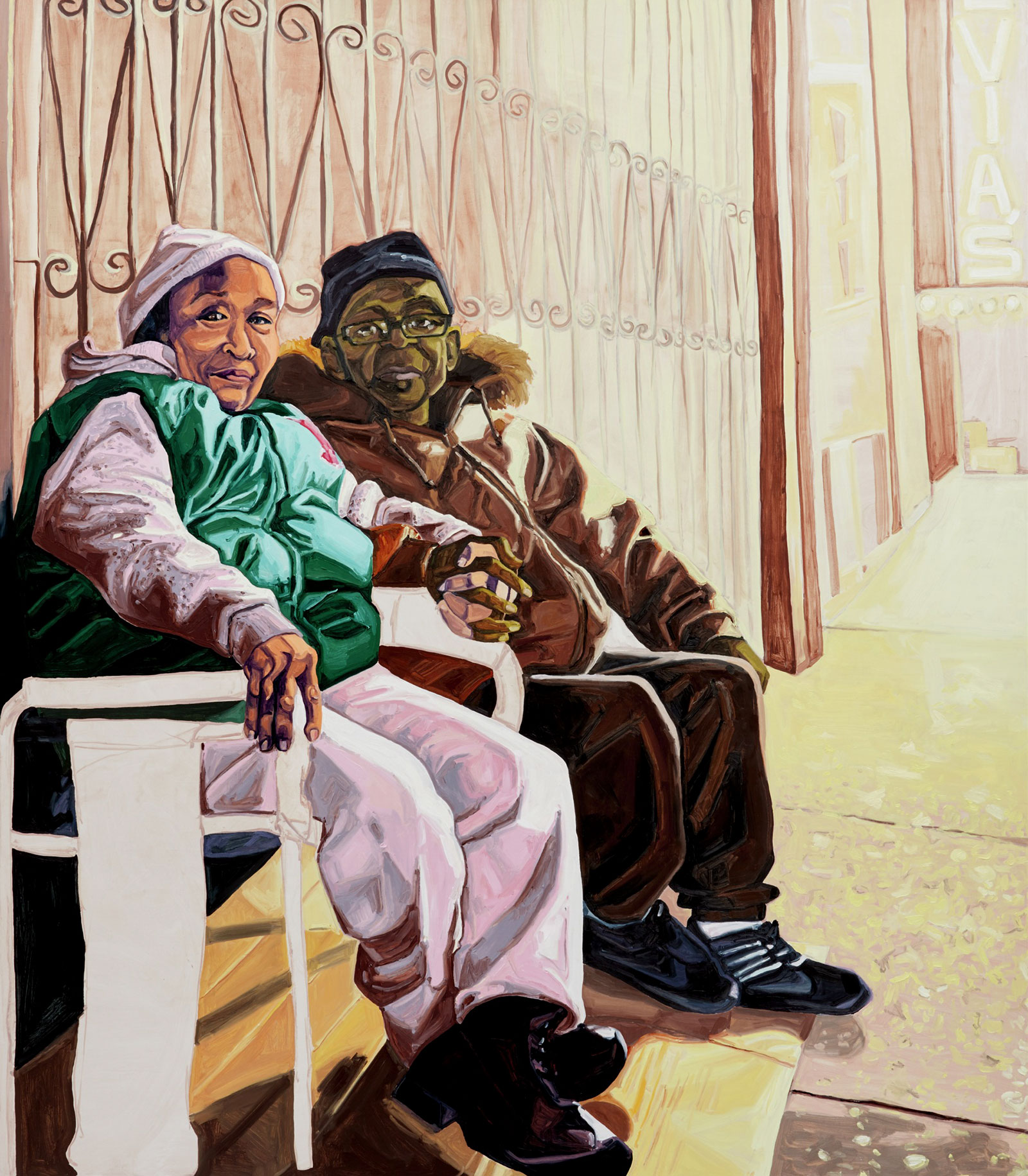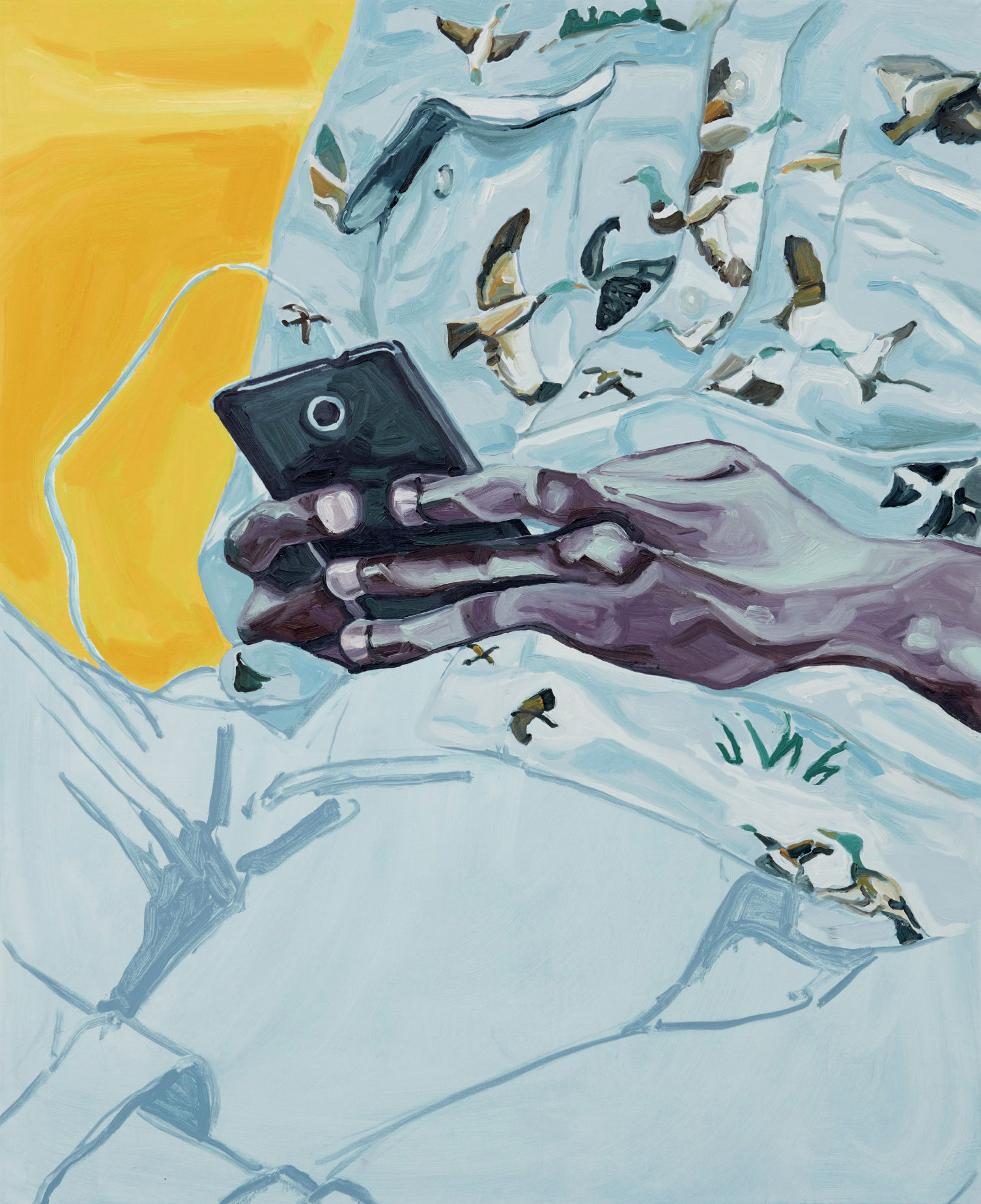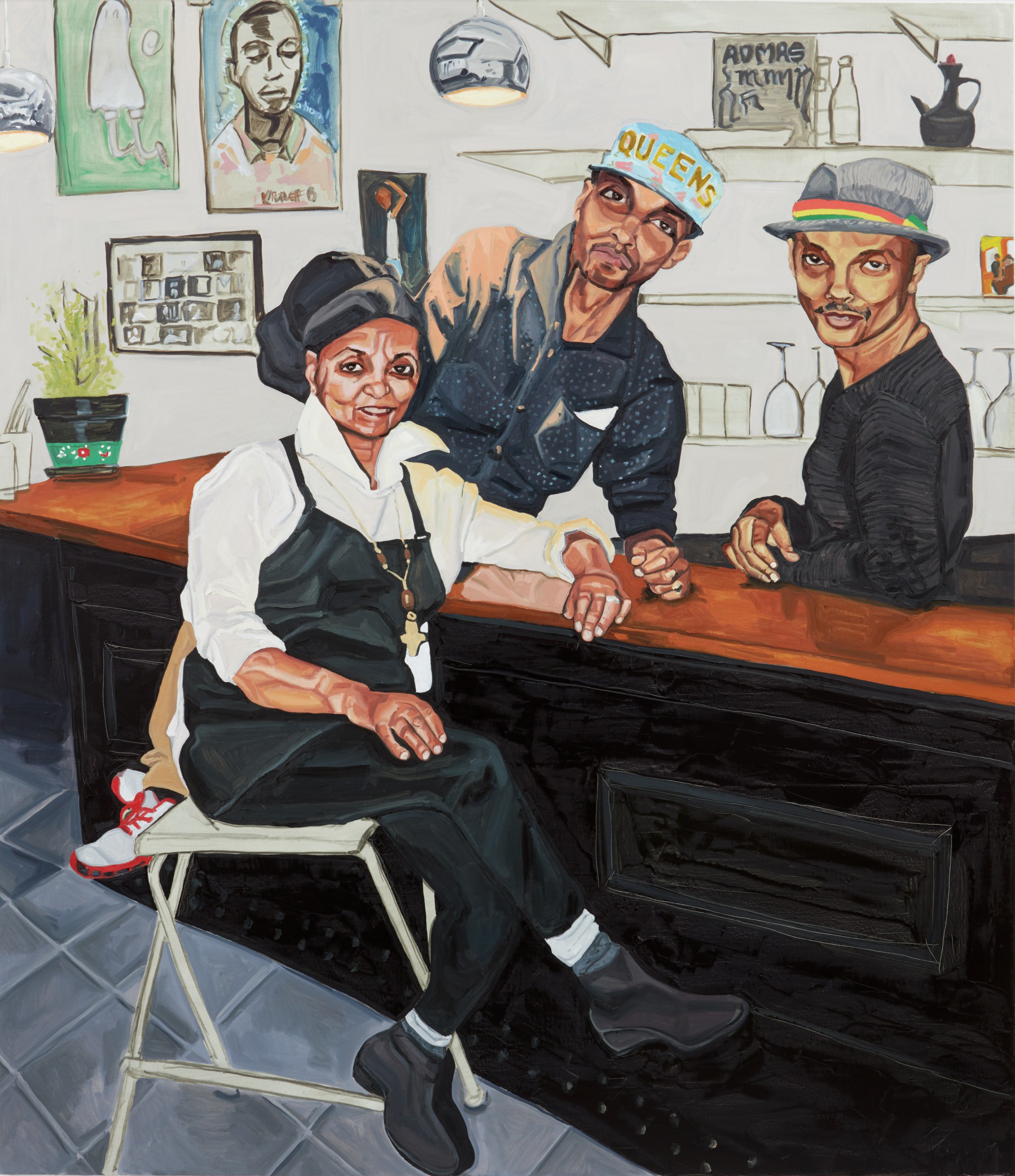The Local newsletter is your free, daily guide to life in Colorado. For locals, by locals.
In her own words, painter Jordan Casteel was lucky to find her soul’s code early on. Born in Denver in 1989, Casteel grew up taking field trips to the Denver Art Museum, although back then, when she was making crafts in the North Building, it was hard for her to envision one day having a show of her own within its halls.
“The history of portraiture, in my experience, is just a bunch of dead white people,” says Casteel in a short video produced by The Root. “What does it mean to put a living brown body out into the world in this context?”
Casteel’s work has been informed by her own experience as a black woman, and her oeuvre—which spans her time in Denver, then Yale University, where she earned a Master of Fine Arts, as well as her eventual settling in Harlem—reimagines the relationship between painter and sitter. Historically, black Americans (and specifically black men) have been criminalized, sexualized, and victimized in the media. Casteel seeks to create a different narrative through her large figurative canvases, giving power to her subjects and letting the audience engage with them as individuals. The title of a new show at the Denver Art Museum, Returning the Gaze, which opens on February 2, captures that sentiment.
(MORE: Read an interview with Jordan Casteel about Returning the Gaze)

“The gaze has most commonly been the male artist looking at a nude female, so the artist had power over the sitter,” says Rebecca Hart, the DAM’s curator of modern and contemporary art. “Jordan engages the sitter, so it’s not an artist–object interaction; it’s an interpersonal interaction that she’s recording in her paintings. There’s an exchange between the artist and the sitter; there’s an equality that she seeks.”
Hart first began discussing a DAM exhibition after a studio visit with Casteel two and a half years ago. Returning the Gaze is comprised of 29 paintings that span a body of work made from 2014 to 2018, including three pieces that have never been exhibited and eight large paintings that measure 7.5 feet by 6.5 feet.
According to The New Yorker, Casteel’s paintings contain an emotional intensity and compassion akin to an Alice Neel portrait, and her subjects have secured her a spot among the new school of diverse portrait painters (that includes Kehinde Wiley and Amy Sherald, who painted the Barack and Michelle Obama, respectively). It’s Casteel’s nuance in color and mastery of composition, however, as well as her ability to capture the everyday that sets her apart.
“I love paint, I love color, I love being an observer, and this exhibit is really a reflection of that,” Casteel said during the exhibit’s media preview on January 30. “I can’t wait for you to meet the people I love.”
The exhibit begins with several portraits of Casteel’s community here in Denver, before showcasing her neighbors in New Haven and New York. In the show is “Benyam” (2018, pictured below), featuring the proprietors of an Ethiopian restaurant Casteel frequents near her Harlem apartment, who, in Casteel’s words, “offered their spirits for a painting.” There’s also “Galen 2” (2014), a naked black man sitting alone in a kitchen, painted in vivid greens and blues—a play on the term “people of color”—forcing observers to address their assumptions about a body before investigating. In “Yvonne and James” (2017, pictured below), an older couple, Casteel’s “heart beat in Harlem,” sit holding hands, basking in a soft, diffused light.
For each portrait, Casteel relies on multiple photos of her subjects, taken to serve as a reference rather than as documentation. Recent portraits, including “Sylvia’s” (2018) and “Fatima” (2018), which were purchased by the DAM, celebrate women of color who are also business owners. “Jordan has also moved from doing straight portraits to what she calls the Subway or Detail series,” says Hart, mentioning several—”Flight” (2018, pictured below) and “Just sayin’” (2018)—which are in the show. In these pieces, Casteel captures people at ease in surroundings that often go unnoticed.
In The Root video, Casteel notes that her subjects would occupy space in galleries that rarely gave them a voice. “I was thinking very explicitly about memorializing and the honoring of a person in the context of a painting,” Casteel says in the video. “I wanted to bring the people who occupied the streets outside the museum into a space that they often times had not visited.”
Appropriately, the opening day of Returning the Gaze falls on the DAM’s Free First Saturday, where everyone may visit the museum without the typical $10–13 charge (kids 18 and under are always free). Casteel hopes that, for many who lack traditional museum experience or haven’t been portrayed in that space, just seeing themselves represented will translate to possibilities.
Although Hart acknowledges the DAM’s emphasis on inclusivity, she is blunt when discussing her motivation for exhibiting Casteel’s work. “Whenever it’s possible, we want to feature artists with a Colorado connection and it’s the Colorado connection that led us to Jordan,” says Hart. “Did I chose her because she was a black artist? No. I chose her because she’s one of the best painters I’ve seen working in quite a while.”
For art history buffs and novice art lovers alike, that reasoning should resonate upon entering the galleries. This show, after all, is about creating and celebrating community.
“This is not a show you have to know a whole lot going into,” says Hart. “You have to bring your heart and your eyes.”
If you go: Jordan Casteel’s Returning the Gaze will be on exhibit in the Denver Art Museum’s Hamilton Building from February 2 to August 18, 2019.











